South Australian Recreation Trails Inc (SARTI)
Our Purpose
1.1 Introduction to SARTI
South Australian Recreation Trails Incorporated (SARTI) was formed to develop walking trails in South Australia. The first project was to develop the Lavender Federation Trail (LFT) from Murray Bridge to Clare.
Having completed the LFT, SARTI offers its expertise and experience to all other like minded bodies designing, installing and maintaining trails. This document consists of three components. SARTI’s purpose, its continuing role as guardian of the LFT and future role in trail development.
1.1 Vision
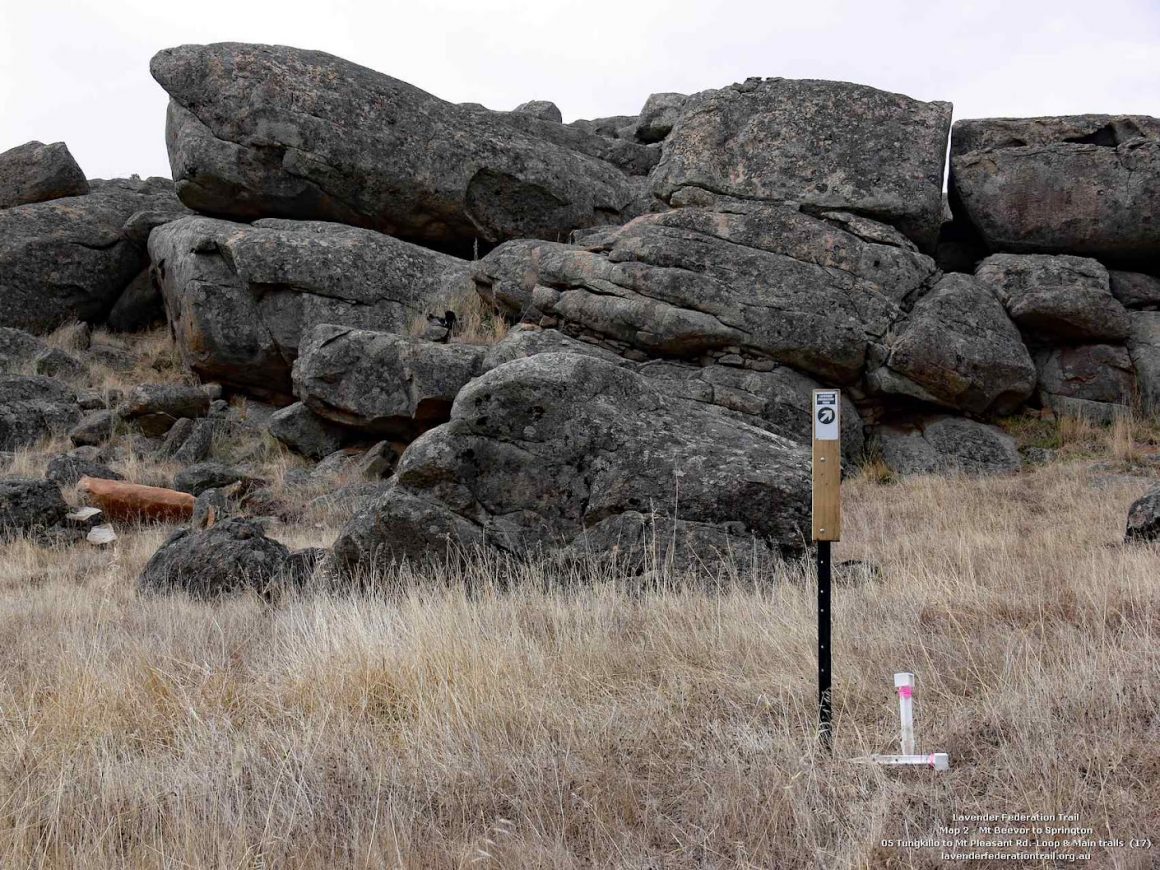
The South Australian Recreation Trails Incorporated (SARTI) is a community-based non-profit organisation dedicated to the establishment of multi-use countryside trails across South Australia’s rich and unique landscape, to increase the well being of all South Australians and visitors and at the same time, encourage the preservation of the State’s heritage and natural environment.
1.2 Mission
To achieve the vision, our mission is:
To maintain the Lavender Federation Trail. Thereafter to help develop as many trails as possible before we reach the hereafter.
1.3 Values
1.3.1 Introduction
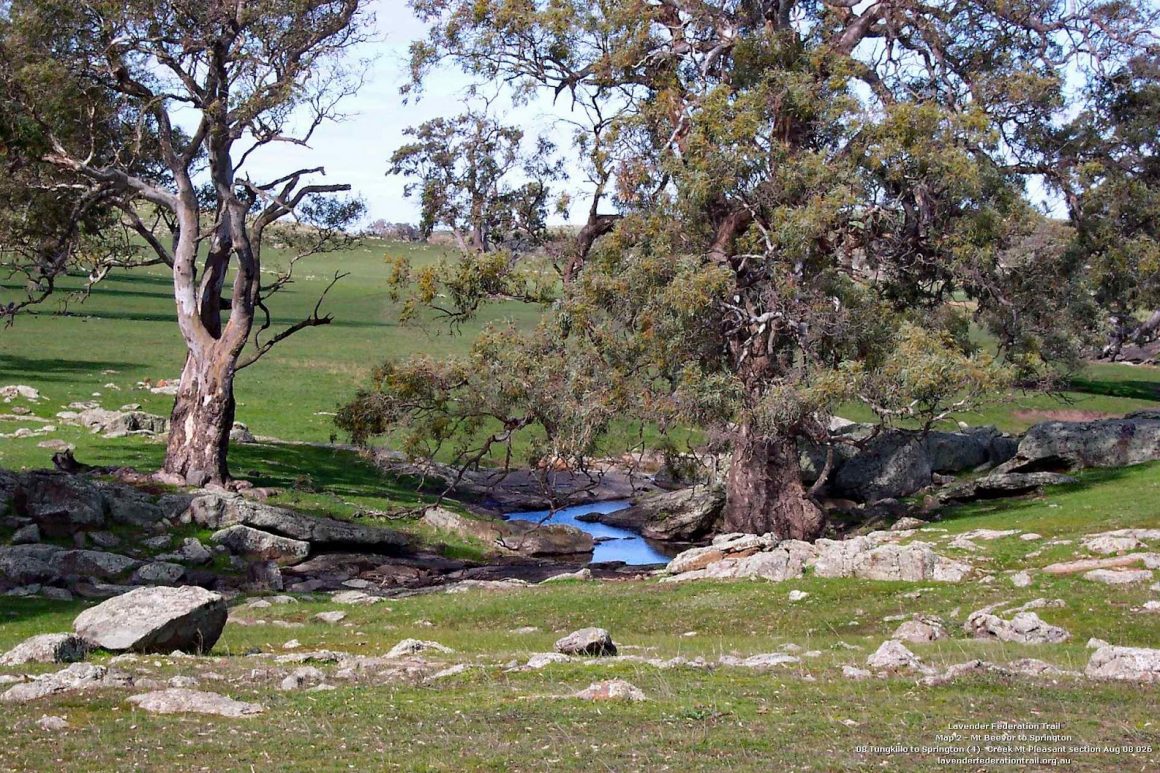
SARTI supports and embraces the Guiding Principles outlined in the Draft Recreational Trails Strategy 2005 – 2010. Conservation of Natural Assets
We recognize that the selection of routes for walking trails must conserve natural assets. Trails should traverse only areas where some walking has previously been undertaken. SARTI is aware that the presence of a well marked and well formed trail encourages walkers to use that trail instead of wandering into more sensitive areas. At the same time the existence of the trail exposes the natural assets for the public benefit.
1.3.2 Ecologically Sustainable Trail Development and Design
Trails should be planned, designed and managed to be ecologically sustainable. This is achieved through a combination of the modification of existing trails, responsible management and use, and the development of new trails in appropriate locations.
1.3.3 Social Values
Trails are designed to be readily accessible, provide a diversity of experience, challenges, appropriate safety and support and cater for all members of the community and visitors.
1.3.4 Economic Values
Trails contribute positively to South Australia’s economy through tourism, employment, business development opportunities and cost savings generated by a healthier community. Allied with this is also the need to ensure that the presence and function of trails does not detrimentally impact upon the economic viability or value of adjacent land uses such as agriculture or residential amenity.
1.3.5 Cultural Values
We recognize that trails should raise awareness and understanding of the nature, culture and heritage of the region through interpretation, education and experiential opportunities. Maps and interpretative signs should highlight these.
1.3.6 Trail Diversity
Trails should provide a network for a variety of opportunities, with distances and physical challenges to suit diverse levels of fitness. Car parking, entry and exit points and facilities along the trails should be developed in consultation with appropriate authorities. As trail networks develop, we will continue to give attention to signage for historic sites, heritage walks and interpretative signs. We have encouraged attention to the country lifestyle featuring local products and access to vineyards.
1.3.7 Continual Improvement and Adaptive Management
The SARTI management structure recognises the essence of this principle. SARTI recognise the importance of interconnection with other trails such as the Heysen trail, Kidman Trail and the Reisling Trail. Our major project, the Lavender Federation Trail and Lavender Cycling Trail is another spoke in the State Trail Network. Our philosophy in this respect is to emulate the “Giant Rambleways” of France.
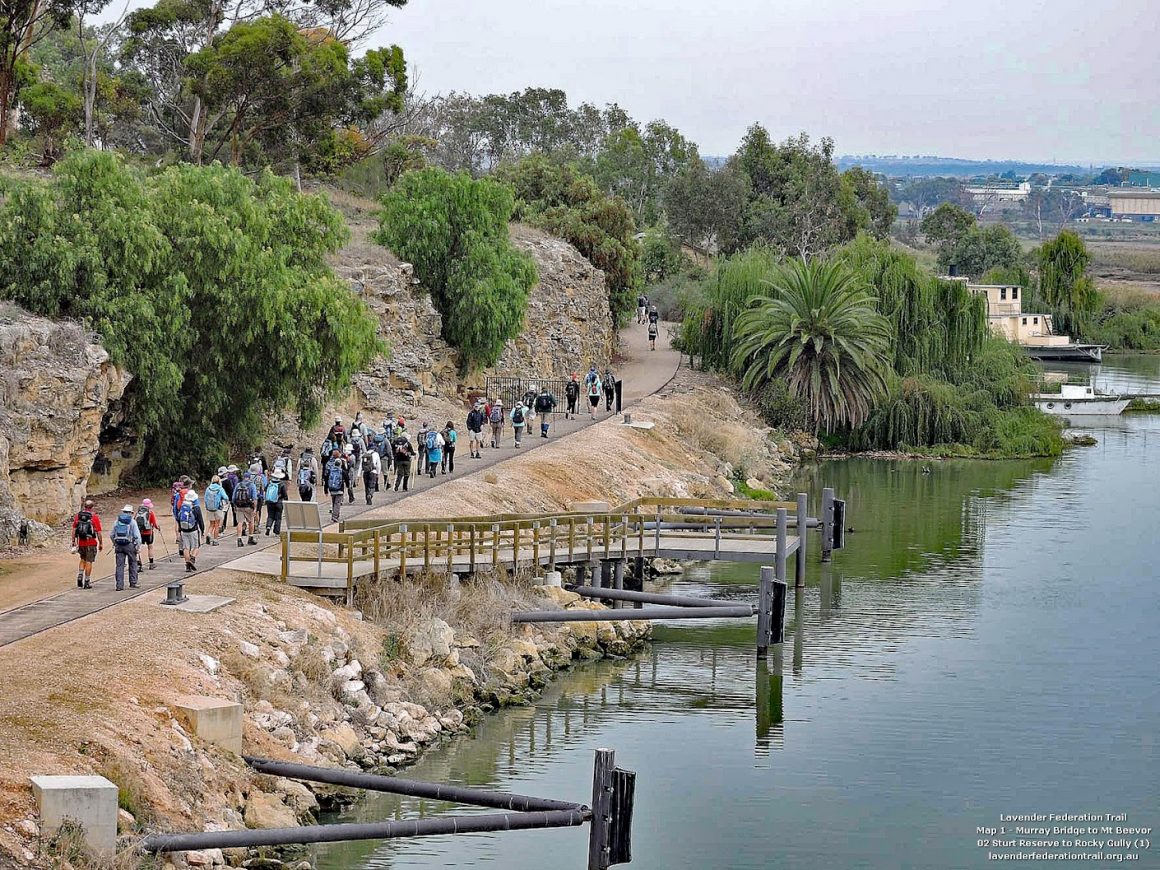
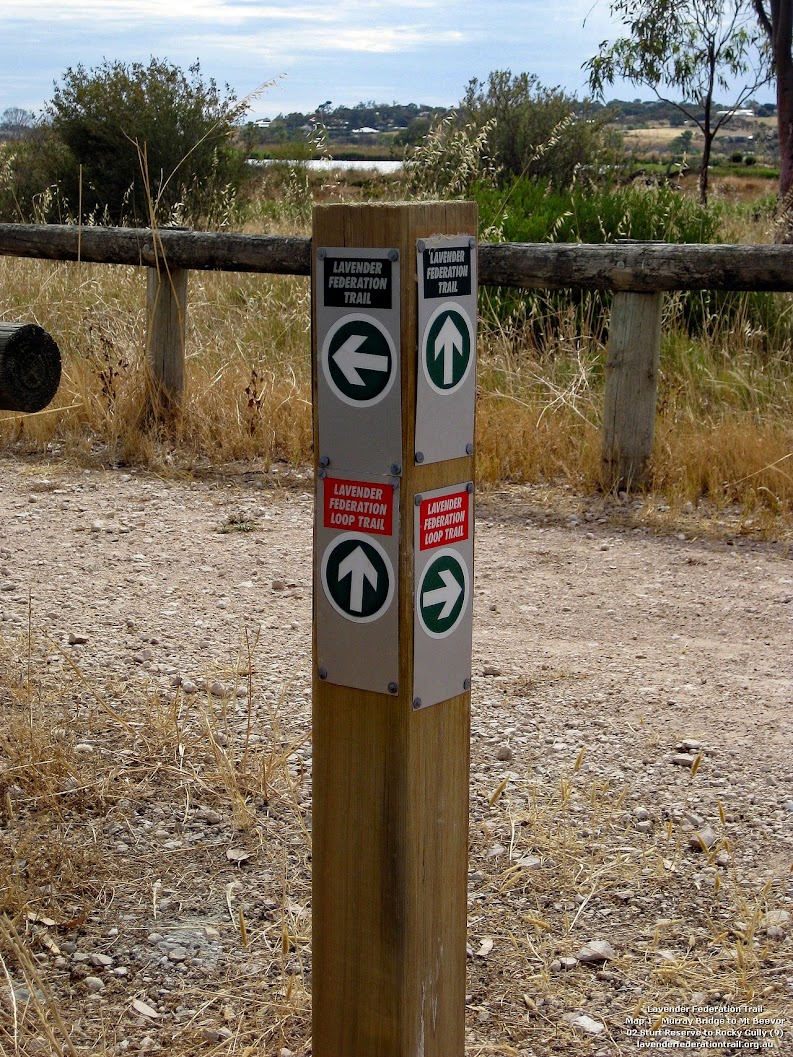
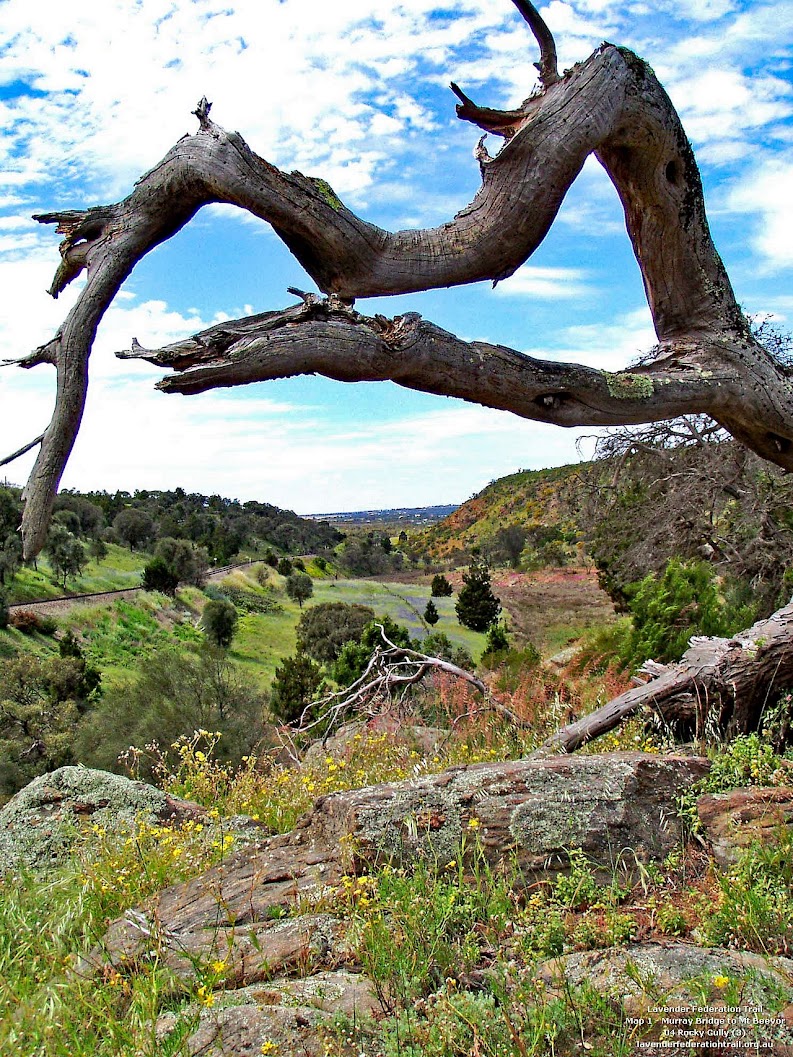
2. Stakeholders
SARTI’s projects have received support from:
- The Government of South Australia (Office for Recreation and Sport),
- South Australia Tourism Commission,
- Forestry SA,
- Rural City of Murray Bridge,
- Mid Murray Council,
- Barossa Valley Council,
- Regional Council of Goyder,
- Gilbert and Clare Valley Council,
- ECBAT at Eudunda,
- Several Progress Associations,
- Clare Valley Tourism Association Inc,
- Walking SA, and
- The walking clubs of SA.
3. Trail Development
Our policy is to develop community involvement in our projects and recruit additional volunteer groups to develop and maintain trails. Over the two decades that we have been developing trails, we have accumulated a wealth of expertise and this is now readily and freely available to other groups.
3.1 Access Agreements
Hitherto, access agreements associated with trails have been informal understandings. These understandings are of two types:
- Through the presence of local government councillors on the SARTI Board, the councils are aware of the use of undeveloped road reserves for trails
- Some landowners who are enthusiastic supporters of trails have allowed trails to cross their land. These agreements are essentially “handshake agreements”.
3.2 Route Planning
SARTI recommends that a section of no more than 25 km be developed at a time. Alternate routes using undeveloped road reserves, existing established paths, access over public land, little-used minor roads and access to private land are considered. Preference is roughly based on the order listed above. However the primary concerns are to have a continuous trail and to optimise the range of walking experiences for trail users.
SARTI then approaches those councils through whose territory a trail travels. Councils then send out a letter, drafted by SARTI advising landowners across whose land, and adjacent to whose land, the proposed route passes. The responses from landowners to these letters are generally positive. However on occasion we are asked to modify the route, or provide special signage and as far as possible we modify our plans. For example:
- Rather than travel down a road reserve which generally is adjacent to a fence line, we are requested to use an existing farm track.
- Rather than pass close to an inhabited building we are asked to skirt around.
- We are often asked to put up signs asking people to adhere strictly to the marked trail.
- We are asked to erect signs warning people to be careful during the lambing season, harvesting or other events.
When the route is finalised, SARTI Board Members traverse the route and establish the signage and furniture required. This is our major expense and is the reason why we need grants.
3.3 Trail Installation
SARTI has a team of experienced trail workers who undertake voluntary trail development.
SARTI has standardised its approach to furniture and signage with:
- The Mark 2 George Adams step over stile, similar to the standard Heysen Trail stile but made of metal with two steps each side and embedded in concrete. These are designed and manufactured by George (200 to date). The benefit of this stile became apparent during the recent bushfires. Fences disappeared but the stiles were intact.
- The older stile made of tubular steel with all joints sealed using rust proofing. Some of these are showing signs of rust and need regular maintenance to treat and repaint joints. To avoid theft, stiles adjacent to roads are concreted into place. Where stiles cross barbed wire or electric fences, the wire is encased in a plastic tube for added safety.
- Our trailmarker was designed in conjunction with the Office of Recreation and Sport to be compatible with other trail markers used in South Australia. It is a 75 mm by 160 mm green and silver metal plate with space for a green and silver direction arrow and a “walkers follow track/fence” inscription if needed. Future development envisages the use of this marker or similar. Additional stickers denote link, loop or spur trails. Another additional sticker has been used for the Sanderston Trail and this strategy will continue.
- Trail markers can be nailed or glued to existing fence posts. Our free-standing timber marker is “500 mm by 80 mm by 50 mm planed” attached to a star dropper by Nyloc nuts.
3.4 Routine Maintenance
Our policy is to recruit additional volunteer groups to maintain sections of completed trails.
The objectives of the maintenance strategy are to ensure that:
- Every section of trail is inspected at least annually,
- Where serious problems arise they are corrected speedily,
- Maintenance is undertaken on a regular basis